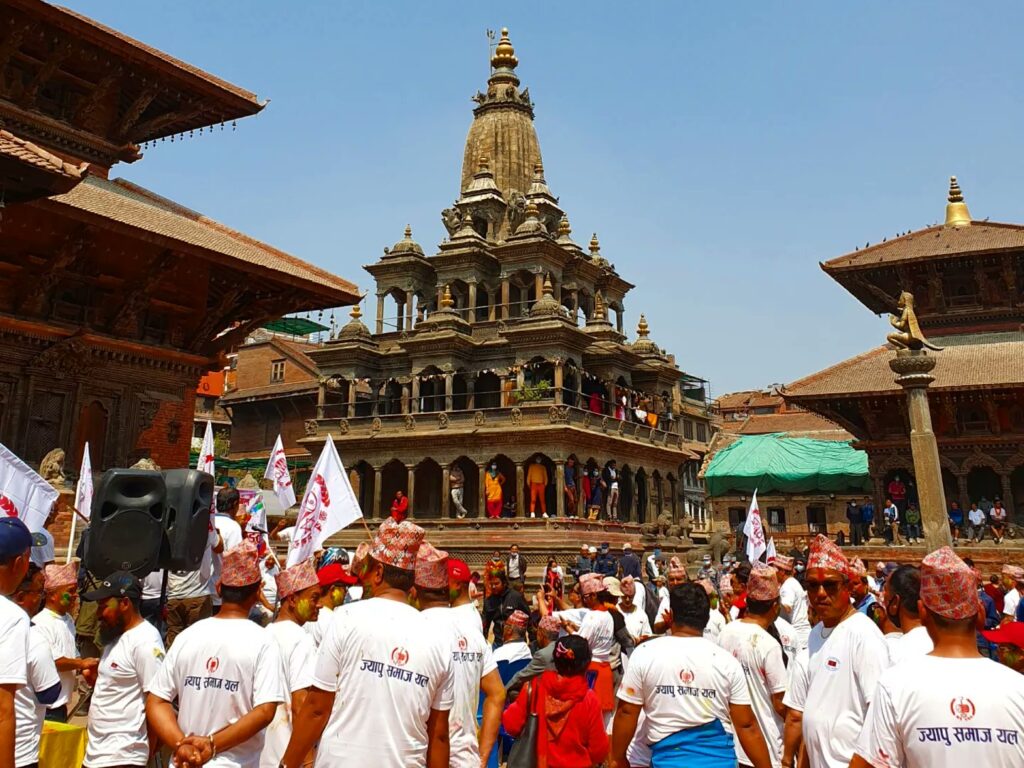By Ranjana Niraula, Editor-Himalayadiary.com

A cold world. Evening and morning embraced by frost. The rare warmth of the sun. Vasant Panchami comes after wiping the dirty eyes of fallen leaves of autumn. And fills the world and nature with new excitement. The journey begins from the moment of Vasant Panchami with new enthusiasm and joy, the king of seasons. That gives the world the most beautiful speed.
The significance of spring in seasons is special in every way. As the spring season is approaching, the Phagu festival comes with colorful joy and happiness. It is customary to share the happiness of people by exchanging colors. The colors that come from the many colors of the experiences that life has to live or the journey that has to be walked are the representatives or symbols of the colors of Holi. It seems like every color has different characteristics like life.
Phagu is an important festival of Hindus living in Nepal and India and in every country. Phagu is a Hindu festival that has been celebrated since ancient times. The Holi Festival is celebrated as a way to welcome in spring, and also is seen as a new beginning where people can release all their inhibitions and start fresh. It is said that during the Holi Festival, the gods turn a blind eye
It comes as a celebration of colors. And before the spring blooms, it puts colorful flowers on each other’s cheeks and increases harmony and love. Culturally, Holi is associated with Holika Dahan. As mentioned in the ancient scriptures, Hiranyakashypu’s sister Holika was blessed by Brahma to not burn in fire.
That is why Hiranyakashyapu assigned Holika to kill Prahlad, the son of his rival. But it is said that Holika, who took Prahlad and threw her into the fire, got burnt and Prahlad survived. Any religious story has its own purpose or sermon. This story also shows the victory of truth over unrighteousness and untruth. Holi Purnima is celebrated as the festival of Phalguna Purnima on the day of Holika Vashma and the victory of Prahlad who was able to survive the fire for the sake of truth. Holika dahan is done on the night before Holi.
Holi is a festival of colors. Its history is also connected with the Treta Yuga. Holi is also known as Phaguwa or Phagu because it is celebrated on the occasion of Phalguna Purnima. Nepal is a country rich in diverse arts and culture. Where there is a variety of festivals. One of these varieties is Phagu festival, which is celebrated by family, friends and friends in a joyful manner, which brings joy to all the children, youth, and old people of the plains, mountains, villages, cities.
Fagu is also a festival of harmony, as colors bind each other in a harmonious relationship, forgetting the sorrows of life.

Phagu is the most ancient festival of Hindus. Historians say that this festival was also practiced by the Aryans and its mention is found in religious books such as Narada Purana, Bhavishya Purana, manuscripts and texts. In the eastern literature, the spring season and spring festival were and still are popular themes.
On the day of Phalgungun shukla Ashtami, Holi begins after burying a chir-lingo specially decorated with colorful cloths in Basantpur Darwar in Kathmandu. And it is believed that the night of Phagu Purnima ended after burning that chir-lingo.
Holi is the festival of colors. It is a festival of harmony and brotherhood. It is a festival of joy and enthusiasm. The various meanings and mesmerize of various colors are a symbol of unity in diversity, like a rainbow united together. This is the time when the nature changes its face, the spring season comes, the natural beauty and the joy of colors make the world waver. In the Vedic age, when the trees turned new leaves, flowers bloomed, fragrances were everywhere, cows, barley fields swayed and the cuckoos started singing, that time was considered the arrival of spring season.
And ‘spring was celebrated as the king of the seasons’. Such sayings are found in the discussion of the spring festival in the Vedas and Brahmana literature.
The spring festival was painted with the colors of Holi, among the colors of which red color is an indicator of strength and good fortune, green color is a symbol of life, vitality and poignancy, yellow color is a symbol of devotion and religious piety, blue color is a symbol of crusade, black color is a symbol of jealousy and selfishness and white color is a symbol of purity.
Vatsyayana, the author of Kamasutra, has explained the months of Phalgun and Chaitra as Madanotsavam. Kamadeva, the god of Madanotsava, makes creation dynamic by harmonizing nature and man. According to the Brahmavaivarta Purana, it is said that the beginning of creation from Brahmaji took place in the month of Chaitra, following the Phagu Purnima. Water and colors played in Holi are such integral symbols of nature and men which can be considered as the factor elements of creation.
Festivals are an integral part of our culture, a means of having fun, exchanging sorrows and joys. We must protect our culture and be aware of various types of distortions and discrepancies in the name of culture. Some distortions are also seen in Fagu, such as: today’s youth paint against their will, break eggs, paint the car’s mobile, make mud, drink alcohol, marijuana, cannabis, and get drunk.
It is a festival to celebrate the victory of truth over untruth, religion over injustice, justice over injustice.
Its main feature is to forget mutual enmity and celebrate together with each other and wish for happiness and peace. The main purpose of Holi Parva is happiness, peace and mutual harmony. Holi means the colors of Fagu are beautiful like colors and eternal like festivals to increase harmony among us.


Comments are closed.